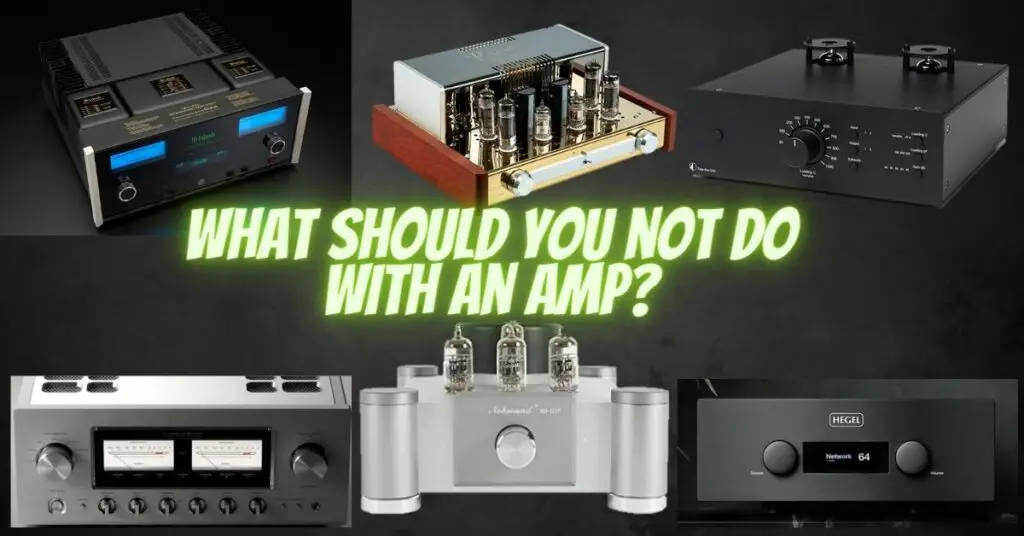Amplifiers are vital components of audio systems, playing a crucial role in enhancing and shaping the sound produced by musical instruments and speakers. However, mishandling or neglecting your amplifier can lead to performance issues, costly damage, or even safety hazards. In this article, we’ll highlight the essential “what not to do” guidelines for amplifiers to ensure their longevity and safe operation.
1. Overload the Amplifier
One of the most common mistakes is overloading the amplifier. This occurs when you push the amplifier to deliver more power than it can handle. Overloading can lead to distortion, overheating, and potentially damage to the amplifier’s components. Avoid turning the volume or gain knobs to their maximum settings, as this can result in overloading.
2. Neglect Proper Ventilation
Amplifiers generate heat while operating. Insufficient ventilation or placing the amplifier in an enclosed space can lead to overheating. Adequate airflow around the amplifier is essential to dissipate heat and maintain proper functioning. Avoid stacking other equipment on top of the amplifier or placing it in a tight cabinet.
3. Ignore Impedance Matching
Impedance mismatching can be harmful to both amplifiers and speakers. Using speakers with an impedance (measured in ohms) that is significantly different from the amplifier’s rated output impedance can lead to power loss, distortion, and even damage. Always use speakers with the recommended or compatible impedance for your amplifier.
4. Use the Wrong Cables
Using subpar or incorrect cables can result in audio quality issues. Make sure to use high-quality, shielded cables to connect your equipment. Avoid using excessively long cables, as they can introduce signal degradation.
5. Disregard Regular Maintenance
Regular maintenance is crucial for amplifiers. Neglecting maintenance can lead to dust accumulation, loose connections, and other issues that affect performance. Periodically clean the exterior, check and tighten connections, and ensure all controls work correctly.
6. Operate in Unstable Electrical Environments
Fluctuations in the power supply can harm your amplifier. Surge protectors and voltage regulators are essential to safeguard against power surges and fluctuations. Unstable power can damage internal components or cause distortion.
7. Use Incorrect Input/Output Levels
Mismatching input and output levels can lead to distortion and signal degradation. Ensure that your source devices and amplifier have compatible input/output levels. If necessary, use attenuation or boosting devices to achieve the right levels.
8. Forget to Turn Off When Not in Use
Leaving your amplifier powered on when not in use can contribute to unnecessary wear and tear, increased power consumption, and, in some cases, the risk of overheating. Turn off your amplifier when it’s not in use to extend its lifespan and conserve energy.
9. Misuse the Gain Control
Inappropriately adjusting the gain control can result in distortion and clipping. Avoid setting the gain too high, especially for instruments with strong output signals, and aim to achieve a clean, undistorted sound.
10. Disregard Safety Precautions
Amplifiers contain electronic components that can pose electrical hazards. Always follow safety precautions, such as unplugging the amplifier before making any internal adjustments and avoiding wet environments to prevent electrical shock or damage.
Conclusion
Amplifiers are valuable tools in the world of audio, and treating them with care and respect is essential for optimal performance and longevity. Avoiding the common mistakes outlined in this article will help ensure your amplifier operates at its best and remains a reliable and safe component of your audio system. Remember, proper handling and maintenance go a long way in protecting your investment and preserving the quality of your audio experience.

